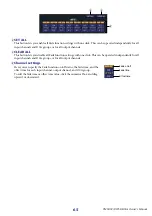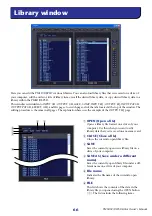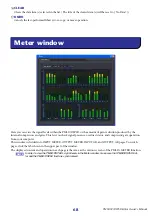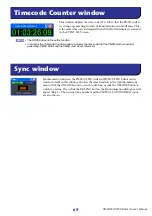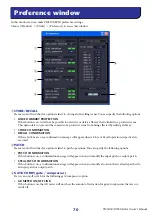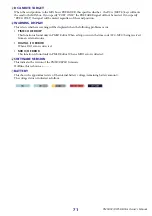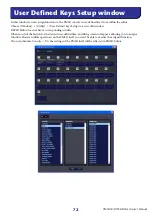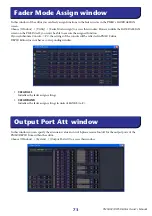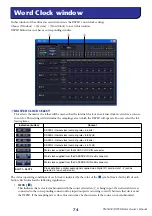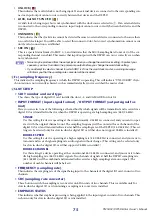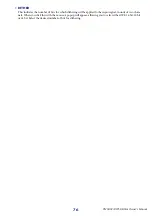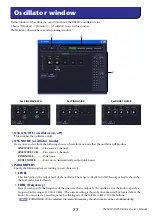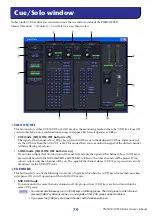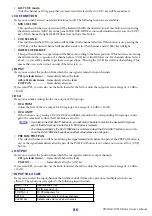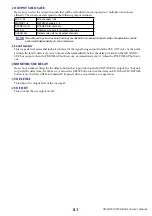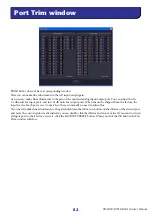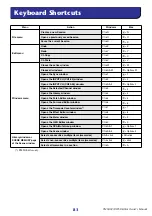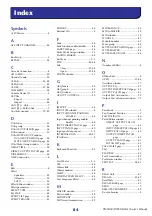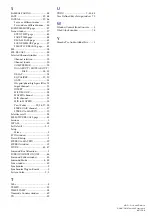
PM5DV2/DSP5D Editor Owner’s Manual
79
In this window of the editor you can edit and view the cue and solo status of the PM5D/DSP5D.
Choose [Windows]
→
[Monitor]
→
[Cue/Solo] to access this window.
A
SOLO ON/OFF
This button selects either CUE MODE or SOLO mode as the monitoring method when the [CUE] key is used. If
you turn this button on, a confirmation message will appear. Each mode operates as follows.
• CUE mode (SOLO ON/OFF button is off)
The signal of the channel whose [CUE] key is pressed will be sent to the dedicated CUE bus, and monitored
via the CUE bus from the CUE OUT jacks. This mode allows you to monitor the signal of the desired channel
without affecting other buses.
• SOLO mode (SOLO ON/OFF button is on)
If you solo an input, the Solo function will be enabled, and only the signal of the channel whose [CUE] key is
pressed will be sent to the MIX, MATRIX, and STEREO A/B buses; the other channels will be muted. If you
solo an output, only that channel will be on. The signal of the channel whose [CUE] key is pressed can also be
monitored via the CUE OUT jacks.
B
CUE MODE
This button selects one of the following two modes of operation for when the [CUE] key of more than one chan-
nel is pressed. If it is off, operation will be in MIX CUE mode.
• MIX CUE mode
You can monitor the more than one channels or DCA groups whose [CUE] keys are turned on within the
same CUE group.
• You cannot simultaneously turn on [CUE] keys of differing groups. The CUE group to which the last-
pressed [CUE] key belongs will be on, and signals of that CUE group can be monitored.
• If you press the [CUE] key of a paired channel, both channels will be on.
Cue/Solo window
4
1
2
3
7
5
6
8
J
9
K
L
NOTE

